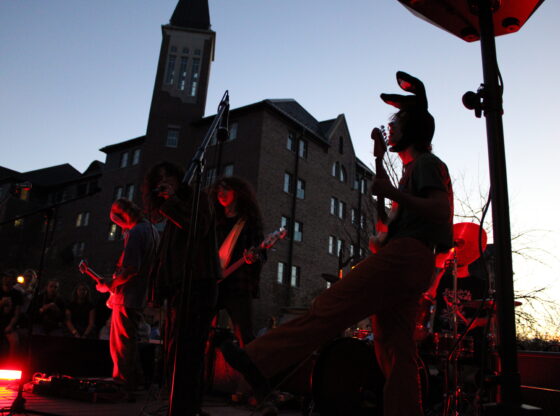This article is part three of a series that explores the history and importance of various buildings across the University of Denver campus in order to highlight the people, places and stories that have made the university what it is today.
Arguably one of the prettiest buildings at DU is the Evans Chapel. Completed in 1878, the quaint stone chapel is technically the oldest building on campus, as well as the oldest Protestant church in Denver. In order to appreciate the chapel’s historical significance, which is closely linked to the history of the university itself, we must first understand the man for whom it was named.
John Evans plays an instrumental yet controversial role in the history of DU and Colorado as a whole. As a physician, politician, railroad promoter and governor of Colorado from 1862 to 1865, he accomplished significant feats in his lifetime. These include founding Northwestern University in Illinois, transforming Denver from a sparsely populated gold mining town into a railroad hub and founding the Colorado Seminary—later renamed the University of Denver—in 1864.
However, Evans’ deeds were not always positive. Not long after the founding of the Colorado Seminary in 1864, the infamous Sand Creek Massacre occurred in southeastern Colorado. This resulted in the deaths of approximately two hundred peaceful Cheyenne and Arapaho people who believed they were protected under the United States flag, per an agreement reached by Evans and Major Edward Wynkoop. Many women, children and elders were killed, which led to public outrage that was believed to have contributed to pressure to change Indigenous policy. Facing immense pressure to resign due to his failure to intervene, Evans left his post as governor in 1865.
The implications of Evans’ actions, or lack of actions, remain apparent today. In 2014, a group of DU faculty members known as the University of Denver John Evans Study Committee, released the John Evans Report, an extensive inquiry into John Evans’ role in the Sand Creek Massacre, ultimately finding him culpable in the needless incident.
And yet, despite Evans’ problematic status, DU still carries emblems of its founder’s significance across campus, as exemplified by the Evans Chapel. A devout Methodist, Evans built the chapel in memoriam of his daughter Josephine, who died in 1868. Notable figures in DU history, such as John Wesley Iliff and Elizabeth Iliff Warren, who founded the Iliff School of Theology, were married in the Evans Chapel.
The gothic chapel was originally located at 13th and Bannock streets in downtown Denver, but was dismantled and moved to the University Park campus in 1958, where it rests on the axis between the Mary Reed Hall tower to the east and Mount Evans to the west. Originally, DU had planned to use this space as a parking lot for the law center. Although it didn’t become a part of DU’s current location until 1959, the chapel is older than any other building on campus.
Today, the chapel serves as a safe haven for everyone, regardless of religious affiliation. Faculty, students, staff and visitors alike are welcome. It is often used for memorial services, wedding ceremonies and various types of religious services. Additionally, it serves as a reminder of the ups and downs of DU’s complex history. As the John Evans Committee aptly concluded in their report, “As an educational community that has inherited Evans’ positive legacies along with his deadly decisions, we have the opportunity to face this history honestly.”











